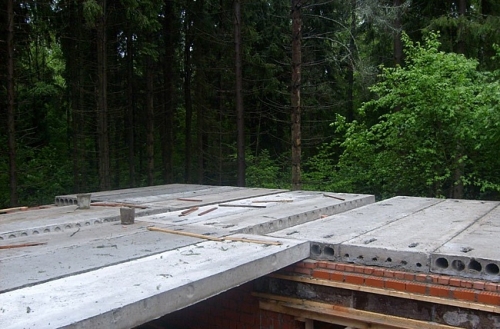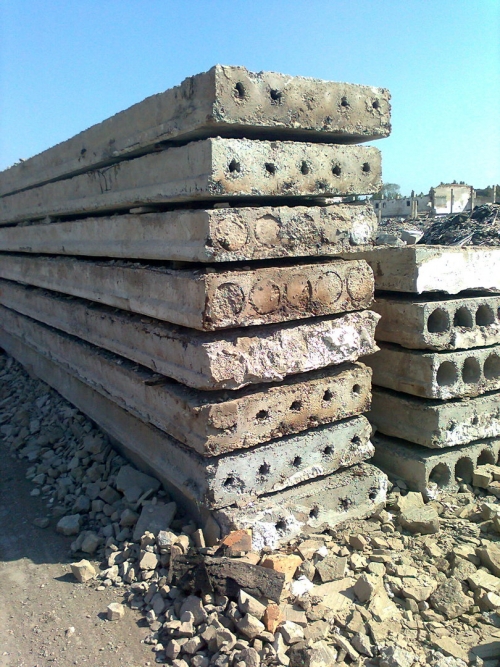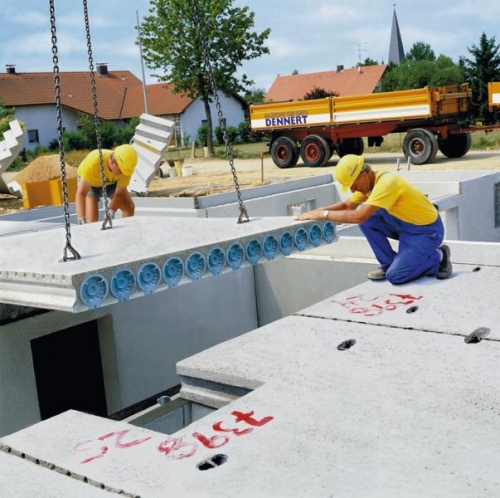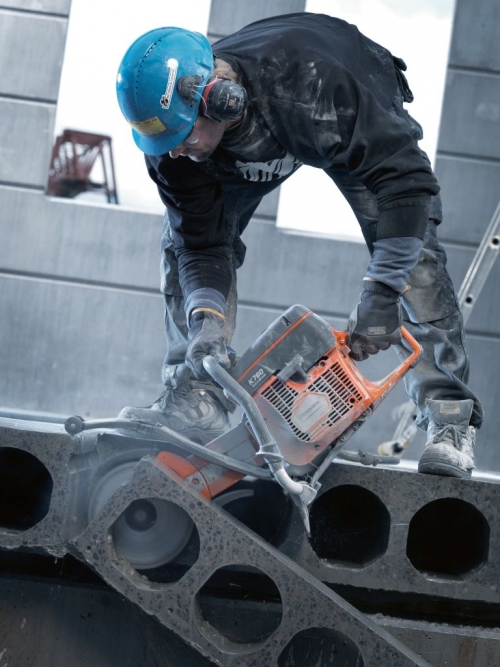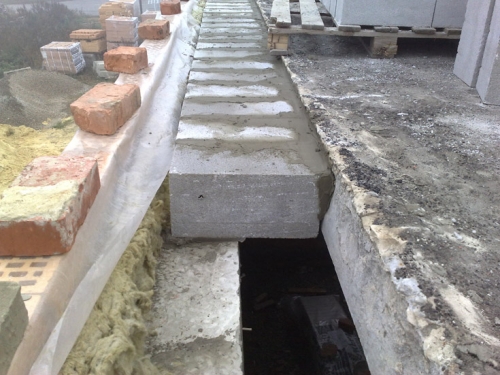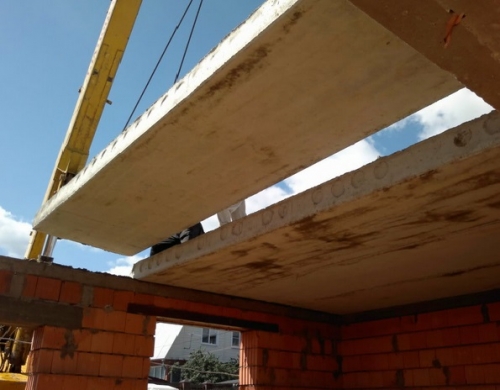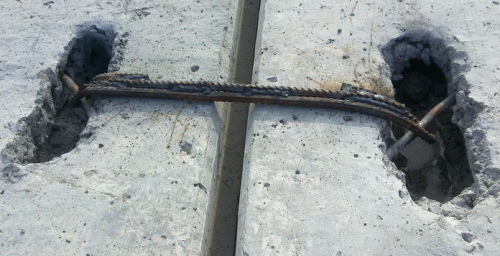The front door is a remedy that separates the personal space inside the house from the external ...
|
|
Tile coatings are considered one of the most resistant to natural wear and ... |
Thermal insulation of any building, whether it is a garage, an apartment or a country house, requires ... |
Installation of floor slabs
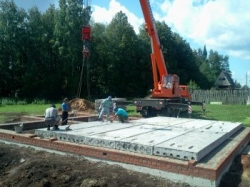
Crossing structures must meet the requirements regarding strength, fire resistance, sound insulation and thermal insulation. All these characteristics are possessed by cond of the slab type. They are used in the construction of industrial, multi -apartment and individual buildings.
Content:
- Types of floor slabs
- Plates of flooring sizes
- What you need to know before the purchase of a PC
- Preparation of walls before installing floor slabs
- A crane site
- Blows of plates
- Installation of floor slabs
- Checking concrete floor slabs
- Survey reinforced concrete
- Features of the installation technology of floor slabs
They serve as inter -story ceilings, where their lower surface acts as a ceiling, and the upper floor of the upper room. Also, slabs are laid on garages, sheds and other economic buildings, thus forming the roof. Often they are used as a foundation.
Types of floor slabs
2 types can be distinguished: monolithic floor slabs and hollow. The former differ in a large margin of strength and bearing capacity. Among the serious drawbacks, their weight, high thermal conductivity and low soundproofing properties can be noted. Such products are often used for the construction of public and industrial structures.
Plates of the floor
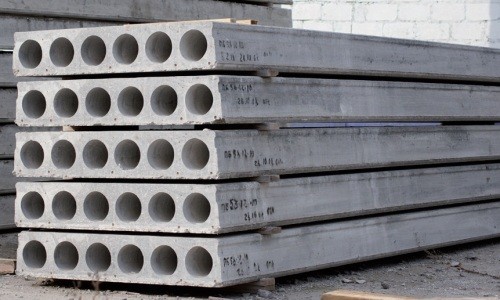
- Holoid fees are used in the construction of private houses due to their cheaper cost and lightweight compared to monolithic analogues. This factor, of course, does not allow you to do without special equipment for the delivery of a PC to the object and installation, but, nevertheless, makes it possible to significantly reduce the load on the supporting walls and the foundation. And as a result, reduce the costs of their arrangement using a smaller amount of building material.
- Voids passing throughout the length of the concrete product can have a round, oval and polygonal shape. They can be used when laying communications using cable channels, plastic boxes or corrugated pipes.
Many empty floor slabs guarantee:
- good heat and soundproofing qualities;
- fire resistance;
- distribution of the load on the load -bearing walls;
- high mechanical strength;
- durability.
Thanks to the even surfaces of the plates, all further finishing work will be held with not only the minimum investment for aligning the ceiling (floor), but also less labor costs.
Plates of flooring sizes
- The floor slabs are produced from 1880 to 6280 mm in a step with 100 mm.
- The thickness of the floor slab is 220 mm. The standard width of the product is 990, 1190 or 1490 mm, although you can find plates with other sizes.
- The weight of the floor slab determines its dimensions, approximately this indicator varies from 500 to 1500 kg. As for the bearing capacity of the unit of the product, on average it is 800 kg per 1 sq.m.
What you need to know before the purchase of a PC
- The presence of traces of rust and fat on the surfaces of the product is not allowed.
- The maximum permissible cracks are 0.1 mm, but it is better than their complete absence.
- All faces of the plates should have the most even surfaces, without bulges and hollows.
- The permissible deviation from the face value is 10 mm, a thickness of 5 mm, a width of 5 mm.
- The product must have appropriate quality certificates.
Before laying the floor slabs, you need to know that:
- the rough side of the plate should be facing up and smooth down;
- customs adjustments are carried out on their lower sides;
- AUTS should be based on 2 short sides, the long side is not recommended to be brought on the wall;
- you will need components for a sand-cement mortar;
- the laying of the plates is carried out close to each other without gaps;
- cranes' services are hourly, so everything necessary is prepared for its arrival so that the work is without hinders;
- the plates should be based only on the load -bearing walls, the remaining internal partitions (walls) are built after installing the ceiling;
- for coordinated installation to help the cranes will need at least 2, and preferably 3 people;
- before the rough finish of the void, the plates are filled with rubble or expanded clay.
Preparation of walls before installing floor slabs
- The load -bearing walls undergo leveling. They should be as smooth as possible in height, the permissible discrepancy is a maximum of 10 mm. You can identify the difference in heights by means of a long beam, which is placed on two opposite walls. A building level is placed on top of the beam, and the longer it is, the more accurately the result obtained.
- Thus, all supports under the floor slabs are checked. At the same time, it is important to measure as often as possible. For this, the beam or timber is installed in the corners of the structure, then moves every 1-1.5 m. The corresponding data can be written on the walls with chalk or marker.
- Next is the highest and lowest point and a concrete mixture is laid out using a cellular metal mesh. The supports erected from foam concrete, slag, gas silicate blocks are mandatory intensifying. This can be done by means of a reinforcing belt at least 15 cm high.
- Armomodium evenly distributes the load, prevents the deformation of the walls and protects the floor slabs from the break.
- The formwork is assembled from the maximum even possible boards in accordance with the obtained values, that is, the faces can have various values \u200b\u200bin height. You can use a special P-shaped profile. The design is equipped around the entire perimeter of the box of the house, including non -digesting walls, especially if the structure is made of light block materials.
- For a batch, a sand and cement mortar is taken 1 bucket of cement (M500) and 3 buckets of sand, it is necessary so that the mixture is not liquid, but not thick. The sand is necessarily sifted to remove pebbles, which will contribute to the destruction of the layer under the weight of the stove.
- After pouring, the solution is pierced with a trowel or segment of the reinforcement to prevent the formation of air layers. Tramoving should be paid to increased attention.
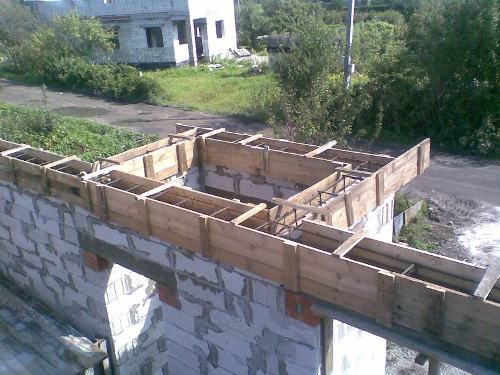
- Before laying the floor slabs, it is necessary to close the void in order to avoid freezing. If the fees were stored on the construction site for a long time, then it is recommended to drill one or two holes through the passage of voids through which excess moisture will go away. It should be noted that the holes are sealed with concrete solution, and during installation the plate should be facing them down.
- Factory voids are filled with expanded clay or large pieces of one and a half bricks are inserted, and the remaining cracks are closed with cement mortar. Although recently plants have been producing plates with closed voids.
- The mixture in the formwork should dry well, gain strength, for this you will need at least 3 weeks.
A crane site
- The soil where the lifting technique will be creamed. You can not install a crane near a house under construction in the presence of a basement. The supporting leg of special equipment creates a very significant load on the ground, which can lead to the collapse of the basement wall.
- With loose or bulk soils, it is recommended to order a tap with a longer arrow. If the work is carried out in spring or autumn, when the soil is saturated with moisture under the car crane laid out with road slabs (you can use the former use of the product). Because the technique can be bogged down in slush under its own weight.
Blows of plates
- It is not recommended to overlap with one stove two flights. Such a load under certain circumstances can lead to its cracking. If just such a laying scheme was chosen, then in this case it is recommended to make an incision with a grinder with a diamond disk (to its depth) exactly in the center of the middle wall.
- If the crack still arises, then it will go exactly in the direction of the incision, which is quite acceptable.
- Unfortunately, it is not always possible to carry out the overlap with whole slabs. Sometimes they have to be spoiled both in width and in length. Here you need a sledgehammer, a grinder with a diamond disk, scrap and muscular force.
- To facilitate the process, the corresponding beam or board is used. Lumber is placed under the stove strictly along the line of the future cut. At a certain moment, the concrete product will break through under its own weight.
- First, a drink is carried out with a grinder on the upper surface of the plate along the marked line. Further, through the sledgehammer, blows are struck along the entire length of the fertile fee. Blows should be applied as often as possible. If the cut falls on the hollow hole, then the plate will break quite quickly.
- When cutting the plate, considerable efforts will have to be made on the width. The falling reinforcement is cut off with a welding machine or cutter. It is not recommended to use a grinder, as the disk can be bitten. But if only this tool is at the disposal, then do not cut the metal rod to the end leave 2-3 mm. Perform the final breakdown with crowbar or sledgehammer.
By cutting the slab, all possible consequences fall on your shoulders! No manufacturer will give an official permission to carry out these works.
- If whole plates are not enough for a complete overlap, and the remaining space is small, then you can avoid the labor -intensive cutting process by using two in the following methods:
- The last or first plate in length does not adjoin the wall. The formed emptiness between the stove and the supporting wall is laid with brick or blocks. The cement screed, performed upon completion of construction, will reliably combine and fasten the laying with the stove.
- This method is good if the existing concrete panels laid the junction of the VSTOK, and the remaining distance is distributed between the two support walls and is filled with the described method.
- It should be remembered that if the empty opening is more than 30 cm, then when filling the screed, reinforcement is performed on this site.
- The plates are mounted on the walls, and the empty gap remains between the slabs themselves. A thick moisture -resistant plywood is attached to the lower surfaces of reinforced concrete, reinforcement is necessarily laid with a call on the upper surface of the plates.
- Thus, something will turn out in the form of formwork, which is poured with concrete solution. After complete drying, the plywood is dismantled, and a common screed is performed on top of the plates.
Installation of floor slabs
- For work, you will need a crane and at least 4 people (crane operator, sling and 2 assistant). A prepared concrete solution with a thickness of not more than 20 mm is laid out on the supporting supports with a reinforcing belt. The plate rises in a horizontal position at the desired height. All actions, namely the movement and direction of the cargo are carried out under the guidance of the sling.
Installers take the floor slab, regulate the optimal location. Before removing the slings, by means of scraps, the concrete panel is sent to the installation site with maximum accuracy:
- from the plate to the wall on the long side, the minimum distance equal to 50 mm is left;
- there should be no gap between the plates;
- the width of the support on each short side of the plates should be at least 150 mm.
Checking concrete floor slabs
- After the installation of the ceiling, the evenness of the surfaces of the nearby plates in level is checked. If the difference in heights is more than 4 mm, then the slabs are reinstalled. AUTS REMOVE AND REMOVE AND In accordance with the Regulation, the solution is removed or added.
- It is impossible to dilute the concrete layer with water, the frozen mixture is completely removed, and a freshly planted is applied to its place. As soon as the leveling is completed, they proceed to fix the plates with each other and to the supporting walls.
Survey reinforced concrete
Upon completion of installation work and after the level of the plates was carried out, they are surveyed. If there is a project, then a special scheme should be present in the documents. Otherwise, the survey is as follows:
- anchor loops are mounted to the load-bearing walls and enter the floor slabs by about 40-50 cm. As a rule, two mounts are enough for the entire length of the panel (they are placed a meter from the edge of the plates). In the same way, one anchor is installed in width;
- if the joints of the plates occurs on their short side, then these areas are fixed according to the diagonal, using the working holes, with a reinforcement located in them. In their absence, you can use special mounts with G- and P-shaped forms;
- between themselves, concrete slabs are fastened at the points of installation holes. Metal rods must be pulled as much as possible and fixed with welding, at least three points.
- After that, the eyes and seams between the plates are filled with a crushed stone of the small fraction, and then a sand-cement mortar is closed. It is not worth delaying with these work, since construction garbage can get into the holes.
Features of the installation technology of floor slabs
- Emailing slabs are widely used in the construction of low -rise and individual buildings. Although they differ in smaller size and lighter weight from monolithic analogues, they still require thickened walls and an enhanced foundation. In addition, they will not be able to block the structure complex in architecture.
- But, despite these shortcomings, the plates provide a reliable overlap characterized by a long service life. Their use is justified in cases where the plates become the basis for the flooring of roofing material, that is, they act as a flat roof.
Video floor slabs
When preparing and installing the floor slabs, it is important to take into account many technical points, which means it is necessary to have certain knowledge and skills. If you are uncertained in the calculations, contact a specialized organization where they will draw up a project in accordance with all the requirements of SNiP.

